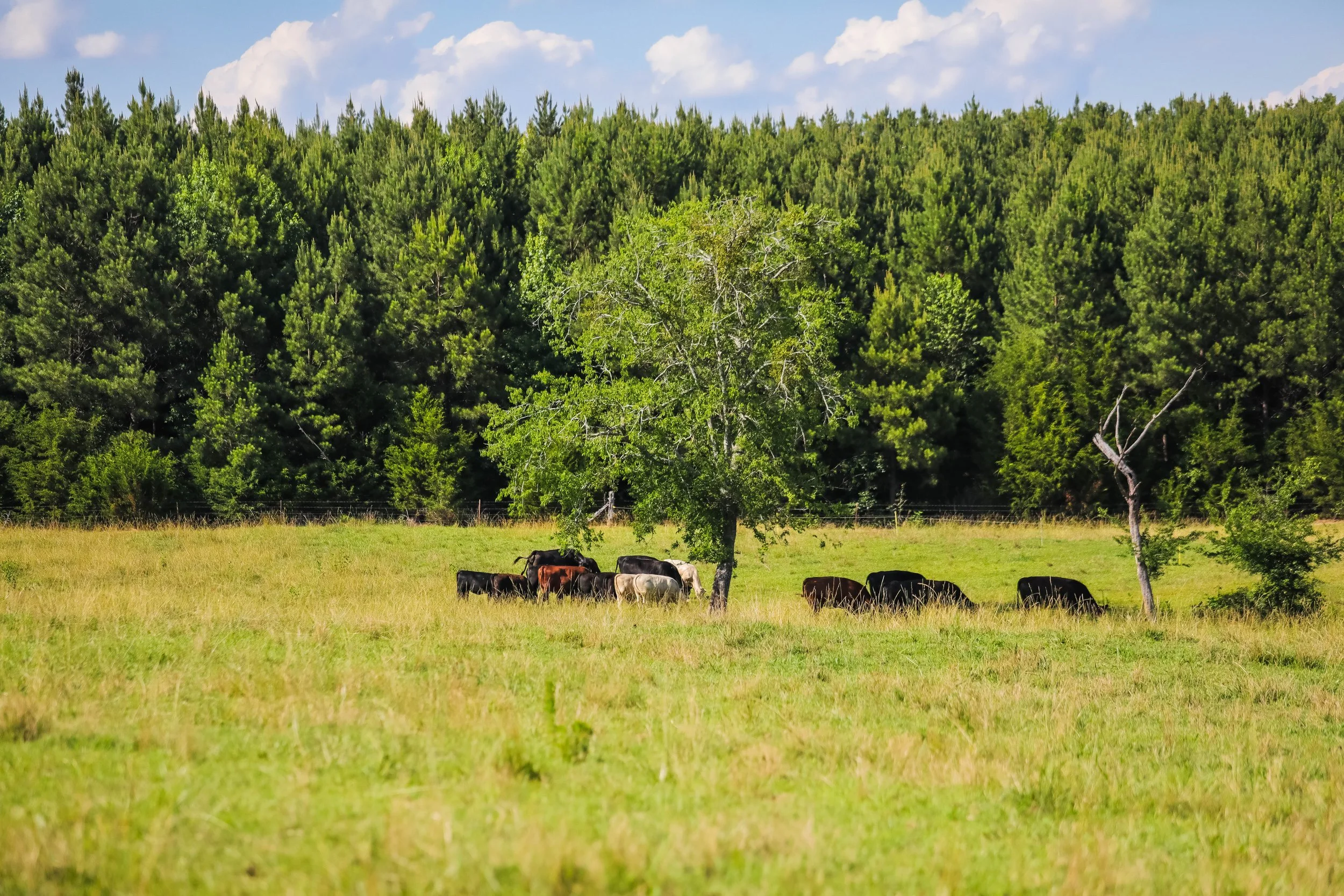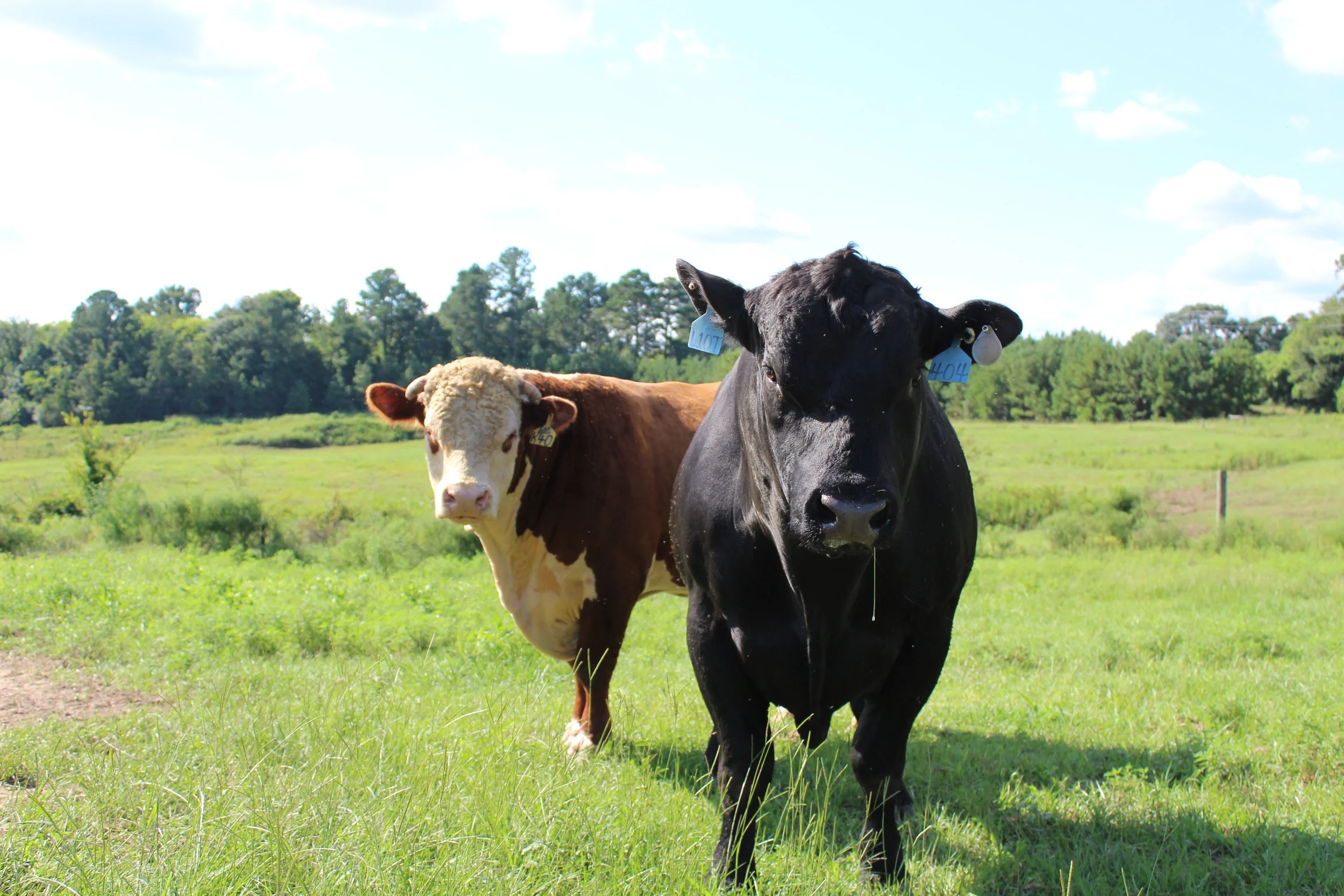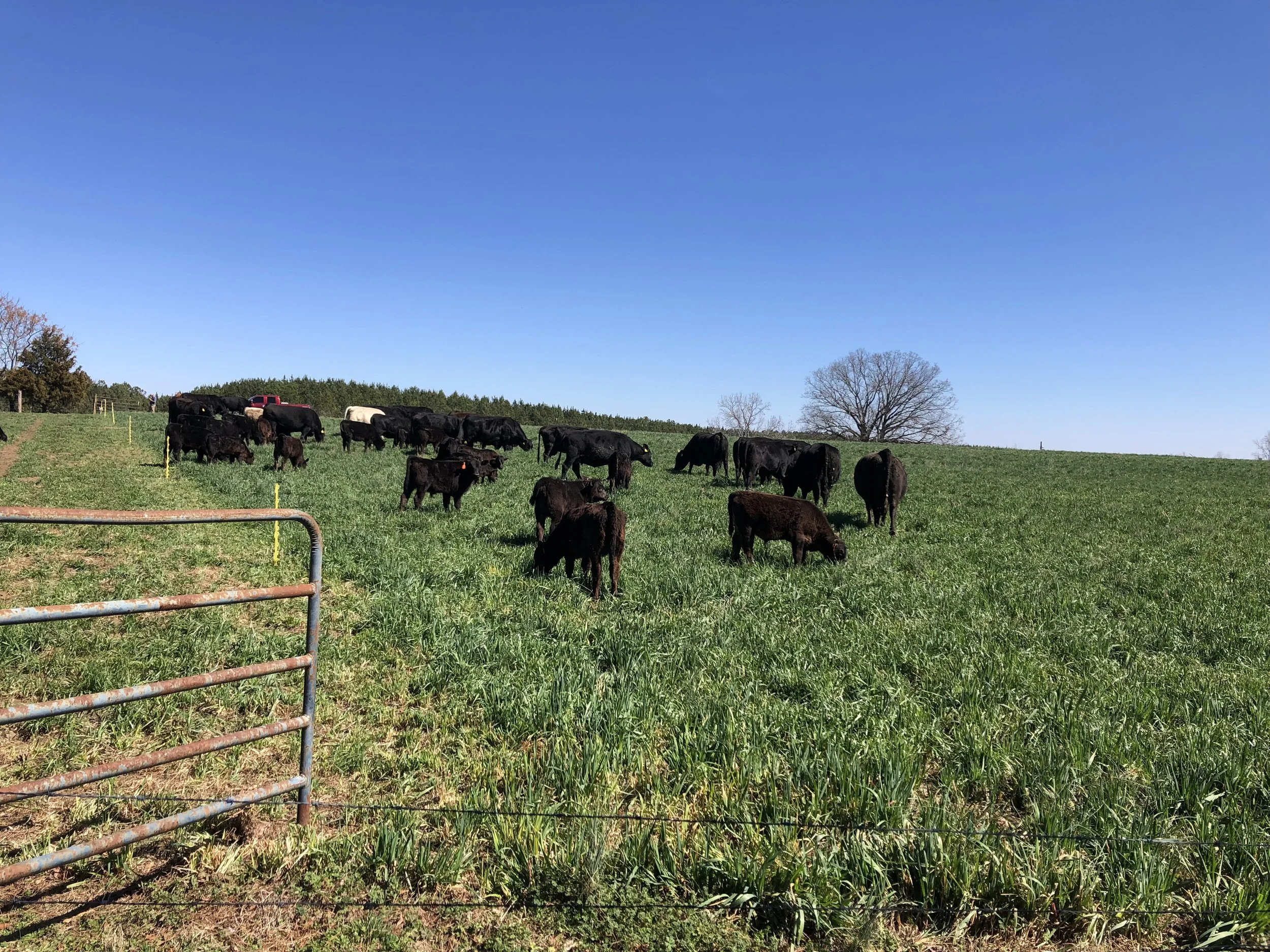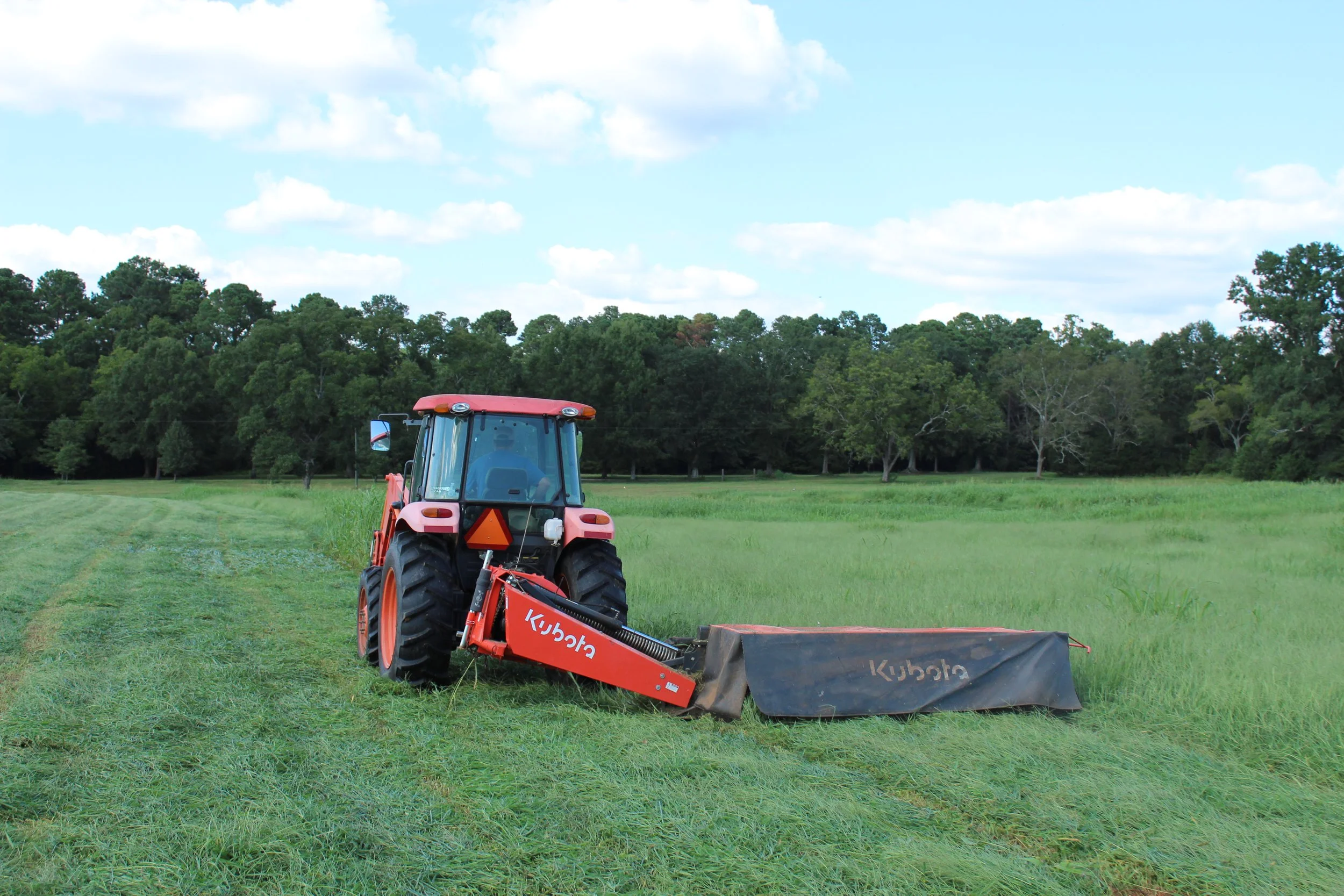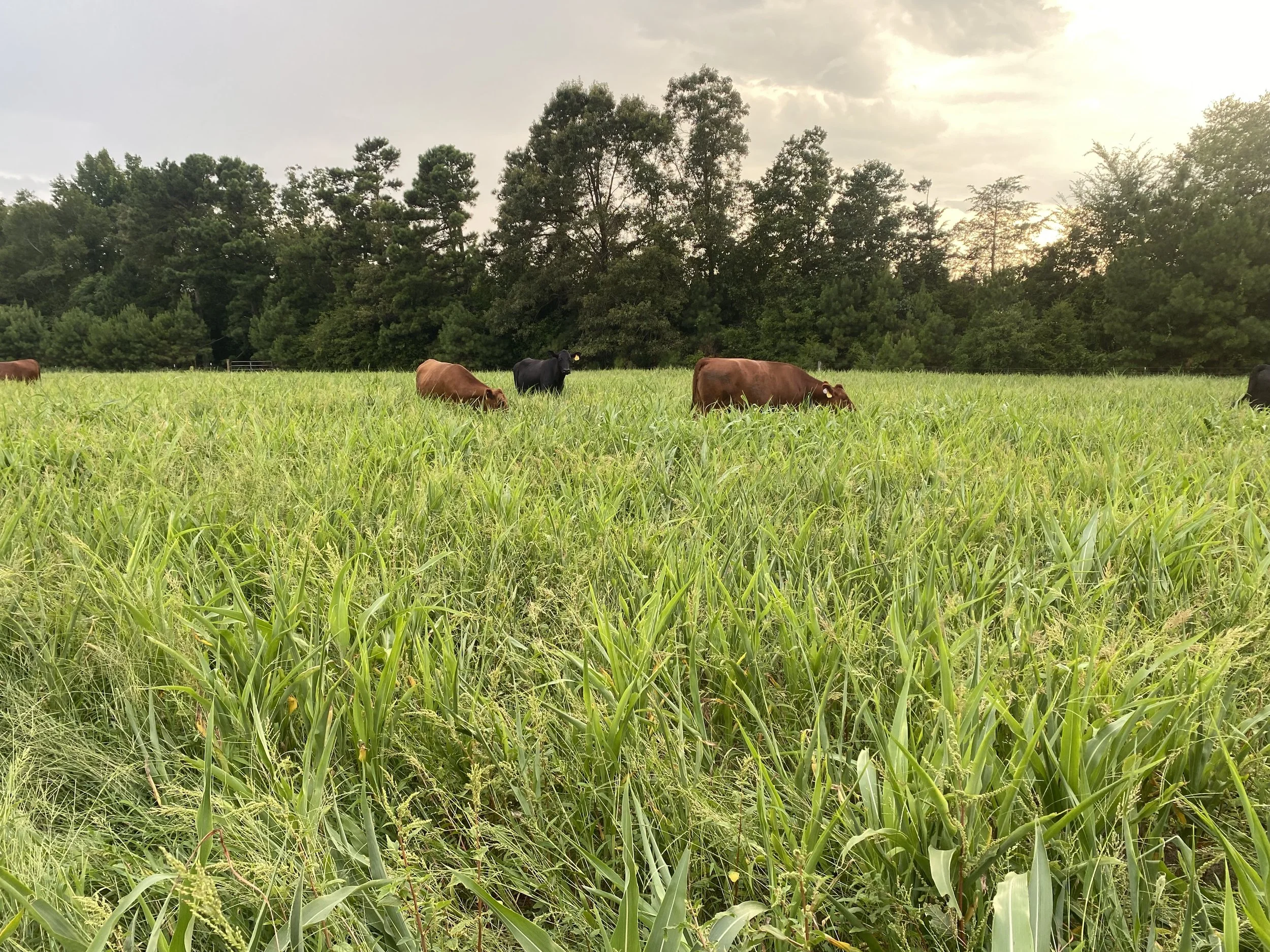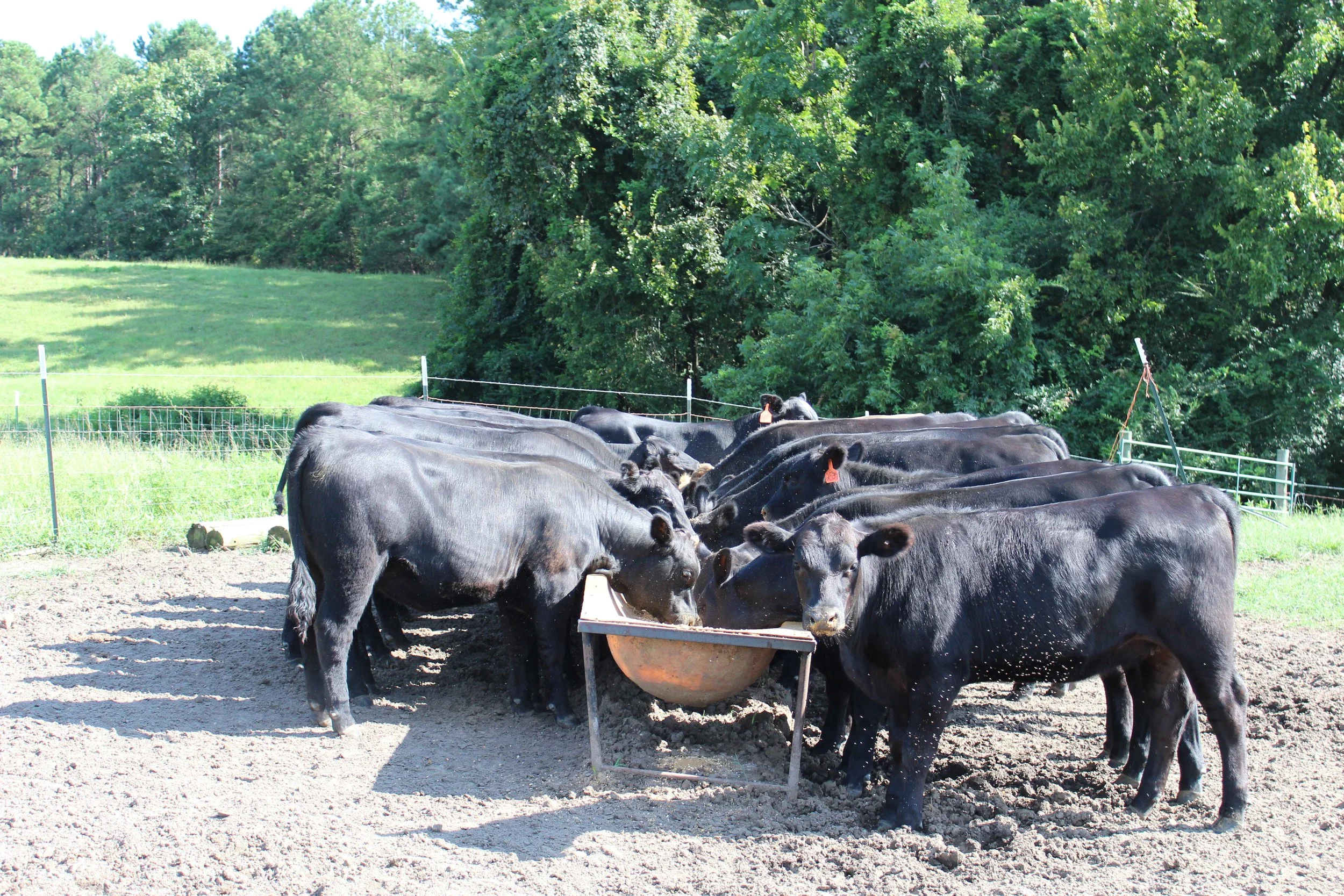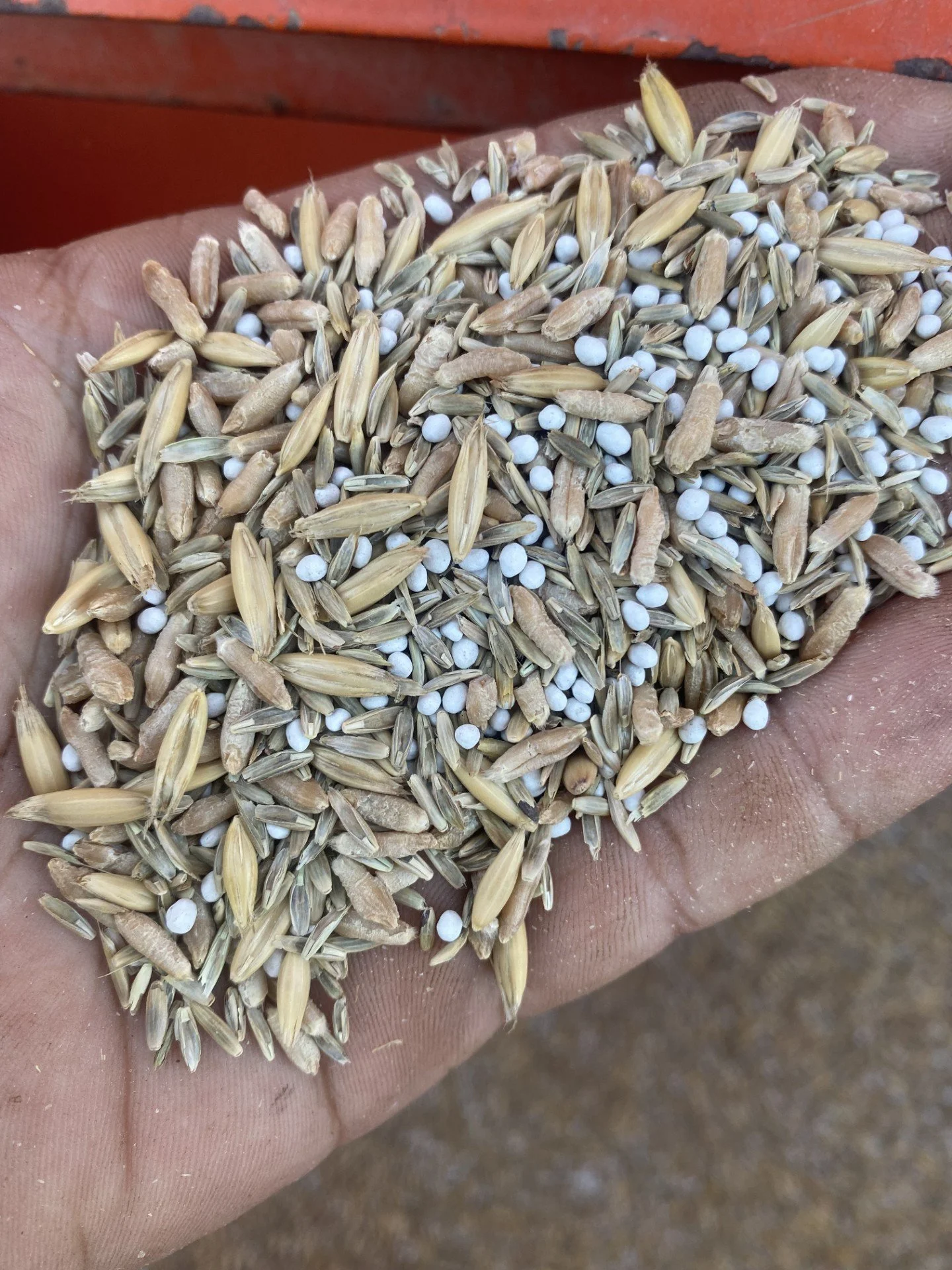The Cattle
What began as a simple dream with two yearling heifers purchased in 2016 has grown into a thriving herd of more than 60 head of commercial beef cattle. Seeing our humble beginning turn into a true cattle operation is something we don’t take for granted. That small start built the foundation for what Cathcart Cattle Co. is today, and it continues to shape the standards we hold ourselves to.
The majority of our herd is black-hided with strong Angus and Brangus influence—breeds known for quality, consistency, and maternal strength. We focus on cattle that are moderate to large framed, able to calve with ease and raise healthy, fast-growing calves that carry good weight by weaning.
At Cathcart Cattle Co., we don’t believe one breed has it all. Angus influence provides a strong foundation in our herd, but we use a mix of genetics to build better cattle with each generation. Using a variety of bulls allows us to capture heterosis and hybrid vigor—keeping our calves healthy, efficient, and performing well on the farm and beyond.
Crossbred calves often out-gain purebreds of similar type and kind, and those extra pounds make a real difference when marketing cattle each year. It’s a balanced approach that supports both herd quality and long-term sustainability for our family operation.
Our breeding program includes Angus, Hereford, and Charolais genetics to bring together maternal strength, growth, efficiency, and quality. The result is a herd built with purpose—strong cattle that thrive on our farm and add value for future producers.
The Bulls
The Process
Managing cattle is a year-round responsibility that takes dedication and patience. It requires a commitment to doing things right while caring for the animals and land. Explore below to see what the yearly timeline on our farm looks like…
Hay feeding is in full swing, with 25–30 bales fed each week to keep the herd in good condition through winter. During this time, we pay close attention to body condition scores to ensure our cows are healthy and well-prepared for breeding season. Cattle are sorted into breeding groups based on the bull selected for them that year, with each group typically consisting of 25–30 cows. Bulls are introduced to their groups around the middle of January to begin the breeding season.
January involves careful planning, which sets the tone for the year and helps protect the long-term strength of our herd.
January
February
February usually marks the start of winter grazing. After several months on baled hay, the cattle are eager to return to green, lush forage. We rotate them through grazing lots every few days to protect the pasture and make the most of available growth. Bulls and cows are checked daily for health and condition, ensuring the herd stays on track as we move toward spring.
February’s goal is to ease feed demands and increase forage quality. It’s always good to see cattle back on green pastures again.
March brings warmer weather and longer days. We continue to rotate cattle through the winter grazing lots. Spring fertilizer application becomes a major focus this month. Typically, perennial pastures (return without reseeding each year) and hay fields not fertilized in the fall will receive poultry litter. We also apply nitrogen to the winter grazing and cool season forages as needed.
March is about setting the pastures up for a strong growing season — a little work now pays off in healthy grass all year long.
March
By the first of April, all bulls have been removed from the breeding pastures and moved back to the bull pen. We separate bulls from the cows after breeding season to ensure all calves are born around the same time each year. A defined calving season makes herd management efficient and safe — it allows us to monitor births closely, provide timely care to newborn calves, and manage health maintenance and nutritional needs in organized groups rather than year-round. April also marks the start of hay season, with ryegrass and fescue usually being the first fields cut each year.
April brings a shift in pace, with everyone pitching in to prepare for hay season and the work that warmer weather brings.
April
With the warm weather of May, the cattle’s winter grazing begins setting seed heads and slowing vegetative growth. Around the middle of May is typically when cattle are pulled off the winter grazing and turned out into the perennial pastures for the first time. After removing cattle from the winter grazing, these pastures are sprayed to kill any remaining ryegrass or oats and then replanted to summer annuals. Sorghum and brown top millet are favorites at Cathcart Cattle Co. Hay baling remains in full swing with many early morning and late nights
May is focused on transitioning from cool season to warm season forages, rotating cattle at the right time and preparing fields so the land stays productive all year long.
May
The start of June marks the end of the first cutting of hay. Bales are stacked on the edge of the field and hauled to different locations if needed. Any pasture spraying that still needs to be done is completed at this time. In wet years, when three cuttings of hay are possible, the second cutting usually starts around the middle to end of June. In drier years, when only two cuttings are possible, the second cutting will usually start around August. Cattle are still monitored daily through the summer, and grazing of summer annuals begins once those forages are established and ready to support the herd.
June often depends on the weather, and staying flexible with hay and pasture plans is key to making the most of the growing season.
June
July is a busy month on the farm. This is when all the cattle are checked by our vet for pregnancy. Any open cows (not pregnant), or cows the vet identifies with problems, will be sent to the sale barn. This helps keep the herd healthy and productive, ensuring resources are used for animals that can thrive.
Calves are weaned (separated from their mothers) at this time and given their first round of vaccines. They are taken to the weaning pen, where they are started on feed. Calves receive booster vaccines 2–3 weeks after weaning and will remain on feed for a minimum of 60 days before being sold. Weaning allows the cows to recover and regain condition, while giving calves the nutrition and care they need to preform for the next producer
July supports long-term herd health, giving cows time to recover and calves the start they need to build strength and condition.
July
August
August is generally a time to catch up on summer jobs that have fallen to the wayside during the busy season of hay baling and weaning calves. Perennial pastures are typically mowed during this time, and any equipment maintenance needed before the final cutting of hay is completed. Cattle are still checked daily, and calves are fed twice a day.
August highlights the work most people never see—maintenance, repairs, and details that keep the operation running strong.
September
The start of September brings the final cutting of hay for the year. With good rainfall, most hay fields can be cut and baled three times; in drier years, only twice. It’s also time to prepare annual pastures for fall planting, making this one of the busiest months on the farm.
Summer annuals are grazed down, then mowed to remove stalks and sprayed for weeds before planting with a no-till grain drill (plants seeds without plowing). At Cathcart Cattle Co., we plant our own fall blend of ryegrass, small grains, and clovers.
The end of September usually marks sale day for the farm’s calves, a day full of excitement and anticipation, as these calves make up the majority of the farm’s income for the year.
September is demanding, but seeing our hard work pay off in the fields and at the sale barn makes the long days worthwhile.
October hopefully brings cooler weather to the farm. With the change in season, efforts are focused on finishing the planting of winter grazing or winter hay crops. As warm-season grasses begin to go dormant, cattle are pulled from summer pastures and moved back to the main farm in preparation for calving season. Hay is hauled from the fields to the farmyard and stacked for use over the winter. Calving season usually begins around the middle of the month.
October is about getting things in order, making sure fields, feed, and cattle are ready for calving and the colder months ahead.
October
November
November brings the start of hay feeding. We try to stockpile as much summer forage as possible to graze as the weather cools off. Winter feeding is by far the largest annual expense of maintaining a beef cattle herd. We utilize several different forage strategies to limit our hay feeding. We aim to only feed hay for 70–90 days per year.
With calving season in full swing, the herd is checked at least twice each day. New calves are tagged, weighed, and treated with iodine around the navel.
November is a busy stretch, but there is something special about seeing healthy calves on the ground as the season turns cold.
December is one of the slower months on the farm, which is a rarity. There is no field work to complete, and calving season is winding down. The main daily tasks are winter hay feeding and breaking ice in water tanks when they freeze. December is often when we focus on larger-scale infrastructure projects.
As the farm quiets for winter, it’s a chance to pause, appreciate God’s creation at rest, and enjoy a little extra time with our loved ones.

